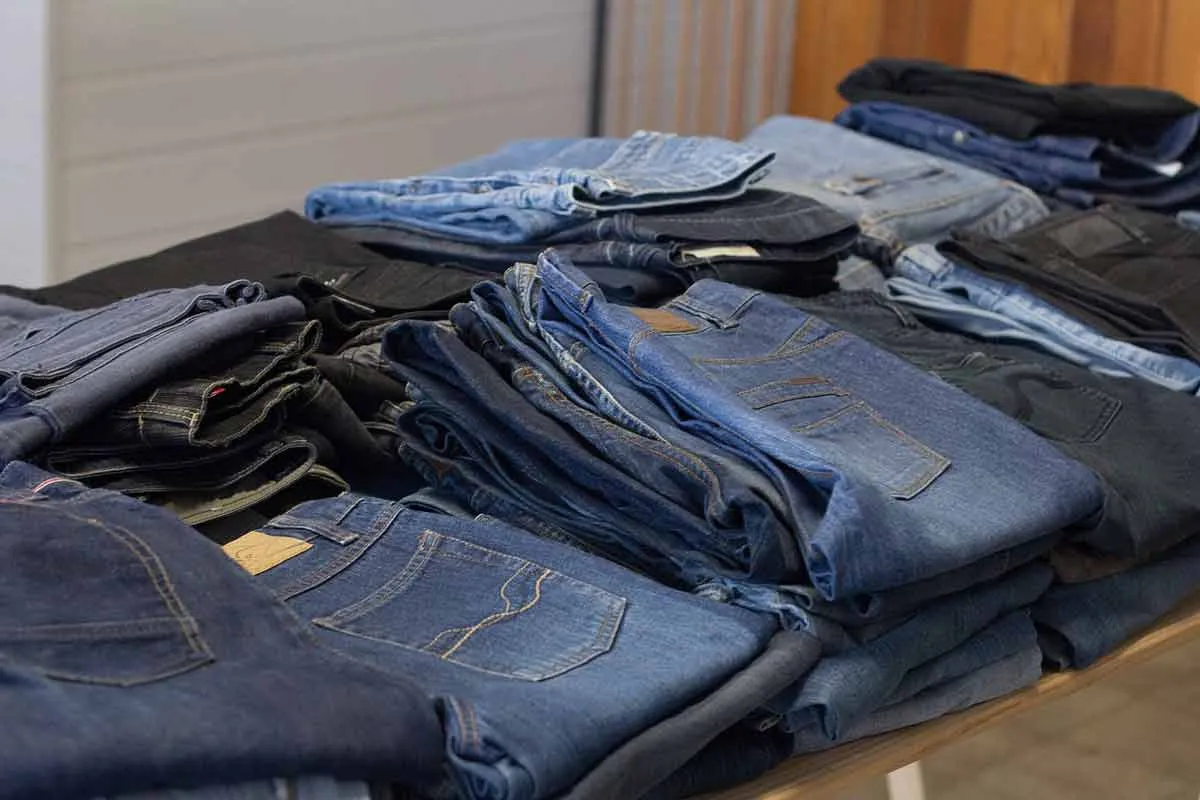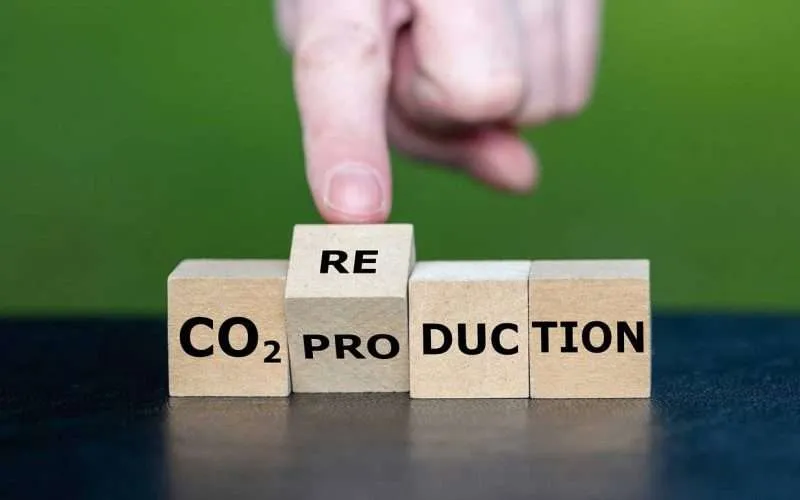Table of Contents Show
Climate change can be a lot to process. The science is intricate, and when it comes to imminent consequences, there is still a great deal of mystery.
Though actual solutions will necessitate action on a global scale, there are decisions you can make in your daily life to reduce your impact on the environment.
What Is Carbon Footprint?
A carbon footprint is the entire sum of greenhouse gas emissions that originate from the making, usage, and end-of-life of a product or service.
It takes account of carbon dioxide — the gas mostly released by humans — among others, comprising nitrous oxide, methane, and fluorinated gases, which capture heat in the atmosphere, triggering global warming.
Typically, most of an individual’s carbon footprint will derive from housing, food, and transportation.
Steps you can take to reduce your carbon footprint:
How to Reduce your Carbon Footprint At Home?
1. Clothing

- Don’t purchase fast fashion. Stylish, inexpensive fashions that go out of style rapidly get discarded in landfills where they release methane as they decompose. At present, the average American throws out around 80 pounds of garments every year, 85% of which end up in landfills. Also, most fast fashion is manufactured in Bangladesh and China, so transporting it to the U.S. involves the use of fossil fuels. In its place, invest in quality attire that will last
- Even better, rummage vintage or secondhand clothing at charity shops.
- Wash your garments in cold water. The enzymes in cold water laundry detergent are made to clean better in cold water. Washing two loads of laundry per week in cold water as an alternative to warm or hot water can save up to 500 pounds of carbon dioxide per annum.
2. Shopping
- Buy less stuff! And buy recycled or secondhand items wherever possible.
- Go shopping with a bag that you can reuse again.
- Attempt to avoid stuff with extra packaging.
- If you’re looking for a new computer, go for a laptop as a substitute for a desktop. Laptops need less energy to charge and function than desktops.
- If spending on appliances and fixtures, look for energy-saving products.
- Buy from and support businesses that are environmentally cautious and sustainable.
3. Heat Conservation
- Draughts waste lots of energy by losing heat. One fast and comparatively inexpensive method is to seal your doors to avoid air leaving around the edges. Keyholes and letterboxes lose heat too and can be concealed. Spaces in between skirting boards and floorboards also create draughts; you can plug these gaps with beading, sealant, or newspaper.
- Put aluminum foil or reflective panes behind the radiators. This reflects heat into the room instead of being absorbed into the walls.
- During winter, close your curtains in the evening to avoid heat loss.
- Ensure your upper floor has a lot of insulation. It’s one of the simplest and inexpensive ways to save energy and is a long-term investment.
- Try insulating your hollow walls. If you live in an older house without cavities, ask a builder to place insulating plaster sheets on the interior of the outside walls. Builders can further place insulating boards on your walls from the outside.
- Why not get in touch with someone who might have a thermal imaging camera to photograph your house on a cold evening and discover where the hotspots are?
- You can decrease 50% of your heat loss by setting up double-glazed windows, which could decrease your heating bill substantially. Make certain they are accurately installed because gaps will cause heat loss.
- Wear extra layers of clothing in the house instead of amping up the thermostat.
4. Electricity Conservation
- Shift to a renewable electricity distributor.
- When your old bulbs break, replace them with energy-saving light bulbs. They last almost 10 times more than regular light bulbs; they will save you funds and are available in lots of different styles. Moreover, begin using LED light bulbs as soon as you can. You can help reduce carbon footprint and also save on electricity bills.
- Appliances left on standby can use around 85% of the energy they would use if in full use. Turn them off at the source, the switch.
- Electric tumble dryers take up loads of energy. Take advantage of a sunny day outside to dry your clothes outside whenever possible.
- When the washing machine is in use, bring down the temperature and make sure there is a full load.
- If you have lights in your yard/garden/patio etc., fix solar-powered lights that charge throughout the day and don’t need electricity.
- Remove your phone charger from the wall since it takes up energy even when not in use.
5. Water Savings
- If your heating system comes with a tank, ensure that it’s insulated with a thick covering.
- A leaking tap is not only bothersome but is even more damaging in water loss and water heating costs if it is leaking hot water. Remember, water has a carbon footprint linked with it from processing too.
- Use the proper-sized saucepan in proportion to its intended use, and when boiling water, boil only the amount you need.
- When preparing a cup of tea, only heat the amount of water that you require.
- Turn the running water off when brushing your teeth.
- Take a shower as a substitute for a bath, which takes up far less water and energy. Still, be careful – power showers may use more water. You can find more tips on water conservation here.
6. Food and the Fridge
- The placement of your fridge can affect how energy efficient it is. Check that it is not close to the oven and away from direct sunlight. Putting it beside an outside wall will support the heat it produces to escape easily, and, ensure at all times that there is enough space around the fridge so that air can circulate.
- Try to de-ice your freezer and fridge regularly.
- Set your fridge’s cooling capacity to only as cold as you need it to be and try not to keep the fridge door open for too long because the more cold air that leaves, the more the fridge has to stabilize the temperature again. Keep a check on the seal too in case it is coming undone and then cold air could be escaping.
- You should never place hot or warm containers of food in the fridge since this will make the fridge run strenuously to maintain cool temperatures. Always let food cool down and then put it in the fridge.
- Thaw frozen items in the fridge as this helps to maintain coolness as it defrosts.
- Shop local, organic food.
- Consume less meat; producing 1 calorie of meat involves a lot more land and energy use in comparison to 1 calorie of vegetables.
7. Driving Tips
Cars are usually very energy wasteful and opting for a train, bus or bike is much healthier for the world. If you can’t do without a car, modifying your driving habits can help lessen its greenhouse emissions.
- Drive smoothly, evading sudden braking and extreme acceleration. This conserves fuel and decreases accidents.
- Strategize your trips to escape traffic, roadblocks, or losing your way.
- Some modern cars inform you when to change gear, but if you are using an older vehicle, inspect your revs.
- The most effective and economical speed is determined by the car in question but is normally about 55 – 65mph. Higher speeds will prominently surge your fuel usage.
- Scan your tire pressures frequently – tires with low air pressure are unsafe and can escalate fuel consumption by 3%.
- If you’re stuck in traffic, turn the engine off if you anticipate being stuck for more than a minute or two.
- Use air conditioning cautiously as it considerably raises fuel use.
- Avoid small journeys in the car. Walk or cycle in its place.
- Equipment like bike carriers, roof boxes, and roof racks substantially influence your car’s aerodynamics and diminish fuel effectiveness, so don’t forget to get rid of them when not in use.
- The heavier the stuff in your car, the more fuel it needs to transport it. Keep your trunk unoccupied of hefty items where possible.
- Get your car serviced regularly to keep it running proficiently..
8. Flying
We understand that occasionally people have no option but to fly but the healthier choice for the planet is if you don’t fly altogether, the subsequent emissions can repeatedly characterize the largest portion of your carbon footprint.
According to BBC, the flight from London to New York and back produces as much as one ton of CO2. Many short flights can be substituted by other arrangements of public transport like buses or trains.
- If you are feeling audacious and have time to spare, there are many fun choices for traveling long distances without flying. There are several websites providing information on how to travel all over the world without flying.
- If you do have to fly to multiple locations, see if you can combine trips.
- It’s best to fly direct instead of making stops since airplanes take up loads of fuel taking off and landing.
How to Reduce your Carbon Footprint at the Office?
Most of the things you can do are similar to those you would do in your home, however, if you are feeling bold, you can always try encouraging your boss to go green too!
- Just keep the lights on that you need. Turn off lights in vacant rooms. Better yet; get your office to put in occupancy sensors.
- Shut down your PC when you leave the office at the day’s end.
- Ask yourself if you must have hard copies of documents, or if can you save them on your computer instead.
- Reason with yourself before you print, if you have to print at all. And if you do, print double-sided.
- Use windows to adjust the temperature around the office to save heating or cooling energy.
- Is there someone you could carpool with?
- Perchance, you may work from home some days when going to the office is not necessary.
A few more tips to reduce your Carbon Footprint
Renewable Energy:
Switching to renewable energy sources is a crucial step in reducing your carbon footprint.
Renewable sources like solar and wind power significantly lower greenhouse gas emissions compared to traditional fossil fuels. Consider installing solar panels at home or choosing a green energy provider.
Carbon Footprint Reduction:
Actively seeking ways for carbon footprint reduction is essential. This can include adopting a plant-based diet, reducing air travel, and using public transportation.
Every small change contributes to a larger impact in combating climate change.
Energy Star:
When purchasing appliances, look for the Energy Star label. Energy Star-rated appliances are more energy-efficient than the standard ones, reducing both your carbon footprint and energy bills.
Food Waste:
Minimizing food waste is another effective strategy to reduce your carbon footprint. Plan your meals, buy only what you need, and compost organic waste.
This not only reduces methane emissions from landfills but also conserves the energy used in producing, transporting, and packaging food.
Fossil Fuel:
Reducing dependency on fossil fuels is key to addressing climate change.
Opt for alternatives like electric vehicles and support policies promoting renewable energy. This shift not only reduces carbon emissions but also improves air quality.
CO2 Emission:
Understanding and monitoring your CO2 emissions can guide you in making environmentally conscious choices.
Simple actions like reducing energy use at home and choosing low-emission transport options can significantly lower your CO2 emissions.
Carbon Offset:
Consider investing in carbon offset programs. These programs fund renewable energy, reforestation, or other projects that compensate for the emissions you cannot eliminate.
It’s a proactive way to balance out your carbon footprint.
Nature Conservancy:
Supporting organizations like the Nature Conservancy can amplify your impact on fighting climate change.
These groups work globally to protect ecologically important lands and waters, aiding in carbon sequestration and biodiversity conservation.






